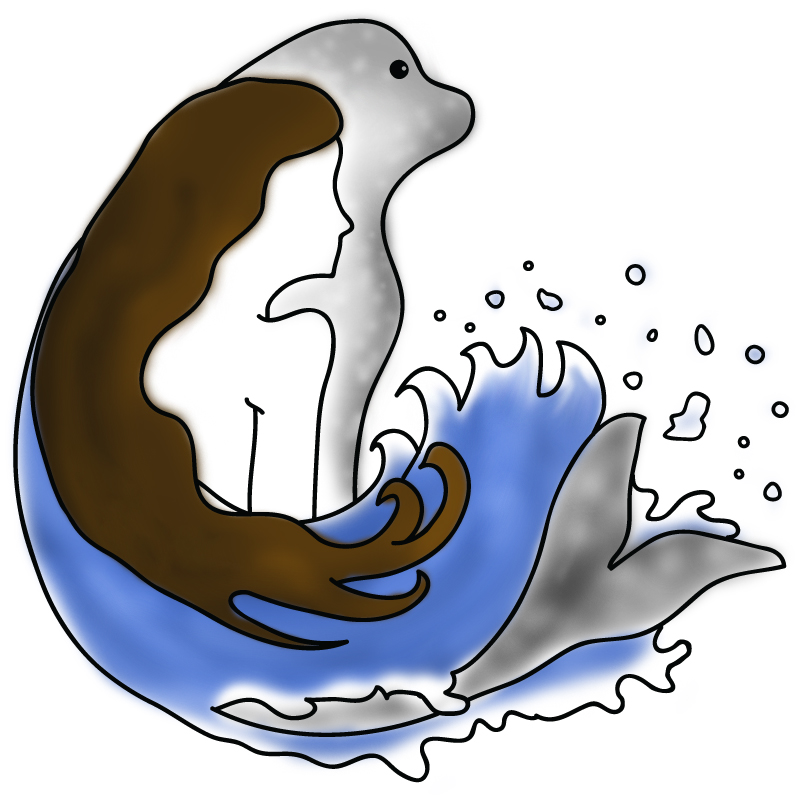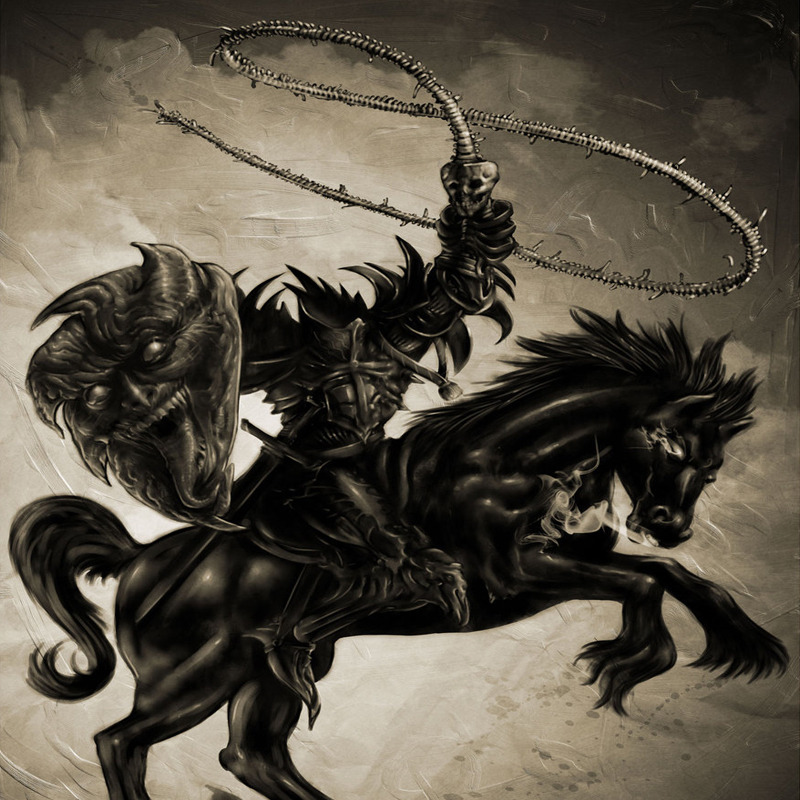Top Ten Strangest Irish Mythical Creatures
by Geoffrey Stanton
With St. Patrick's day right around the corner, everyone's feeling a little Irish. It's probably safe to assume that everyone out there has heard of a leprechaun, and it seems fairly likely that many people will also be familiar with a Banshee, at least in name. But Celtic mythology is simply chock-full of weird creatures you've probably never even heard of. Here are some of the best.
10. Selkie

In Celtic myth, a Selkie is a creature that lives most of its life as a seal, but sheds its skin from time to time, leaving it on the beach while it dances on dry land. After discarding their sealskin, Selkies are said to take the form of hypnotically beautiful men or women, which often makes them a source of fascination for Irish fishermen. The most common folktales relating to the selkie usually involve a lone fisherman spying a beautiful selkie maiden on the shore and stealing her seal skin, hiding it away and forcing her to become his bride. Though the selkie makes an obedient and attentive wife, the fisherman must carefully guard the secret of where her pelt is hidden, because she will often abandon her husband and children and use it to escape back to the sea. Of selkie men, it is said that they will come to seduce a fisherman's widow if she cries seven tears into the sea.
9. Kelpie

A Kelpie, or "water-horse", is a malevolent spirit that often takes the form of a lost pony or foal, usually seen dripping wet. Its unassuming disguise is meant to lure individuals, usually children, into climbing onto its back. When a rider mounts, the beast's silky skin becomes adhesive, and it gallops headlong back into the water from whence it came, drowning and subsequently devouring its trapped rider--all except the heart and liver, although the stories fail to elucidate precisely why that might be the case. And of course, as with many Irish mythical creatures, it is also thought to occasionally appear as a beautiful man or woman who seduces unsuspecting humans and leads them to their deaths.
8. The Salmon of Knowledge

This is an interesting one. Figuring prominently in the story of Fionn MacCumhaill, the Irish folk hero of the Fenian myth cycle, the Salmon of Knowledge is supposed to have come into existence when an ordinary salmon ate nine hazelnuts that fell into the Well of Wisdom from surrounding Hazel trees. No word on what the salmon was doing at the bottom of the Well of Wisdom or what was particularly special about those hazelnuts, but long story short, the fish gained all of the world's knowledge in its flesh. Fionn, the hero of legend, burned his thumb on some searing fish fat while he was cooking it for the poet Finn Eces. As a result, he absorbed all of the world's knowledge, and for the rest of his life could call upon this knowledge by simply biting his thumb. It makes perfect sense! The Salmon of Knowledge legend was notably parodied by the late, great Douglas Adams in his unfinished final novel, The Salmon of Doubt.
7. Abhartach

Abhartach, according to Irish folk tradition, was a cruel and vicious chieftan who persecuted his subjects relentlessly--by some accounts even drinking their blood. Said to be a powerful magician, he reigned as a tyrant until he was finally slain by the chieftan of a neighboring tribe. But, buried in a standing position, he emerged from the grave the next day and began terrorizing his erstwhile subjects anew. He was once again slain by his neighbor, once again buried right-side-up, and once again returned to earth in a day's time, until he was finally slain for good, this time buried head-down so that he couldn't return. Interestingly, though the story of Dracula is traditionally thought to arise from the life and atrocities of the 15th Century Transylvanian ruler Vlad Tepes "The Impaler", historian Elizabeth Miller points out that the sources available to Bram Stoker at the time of its writing did not chronicle his various misdeeds. Given this fact, and considering that Bram Stoker was an Irishman, some historians speculate that the Abhartach legend is a much more likely source of some elements of the Dracula story.
6. Gancanagh

You know, it's really odd how many mythical Irish creatures list seducing unsuspecting humans as their raison d'etre. If they're really all so sex-crazed maybe they should just have some sort of otherworldly singles mixer where they can discreetly pair of without seeing us poor mortals spirited away, drowned or subject to countless other misfortunes. And as misfortunes go, unwitting victims of the Gancanagh certainly experience one of the most bizarre. Appearing as an irresistibly beautiful man, the Gancanagh leaves his victims physically addicted to his love by way of a toxin that he excretes from his skin. When he departs, his love-lorn (and de-toxing) subjects waste away for nothing for want of his companionship. Some even fight other women to the death for his love--which, of course, they cannot really possess.
5. Bean Sidhe

Closely associated with the banshee (and probably emanating from the same source), the Bean Sidhe is an omen of death in Celtic mythology. According to legend, they are spirits (in some sources, of mothers who were murdered or died in childbirth) who appear to portend the death of a local individual--usually someone of importance--by wailing. In some versions of of the story, the Bean Sidhe can be spotted by a riverbed, washing the blood out of the garments of the soon-to-be deceased. It is said that if a passer-by asks the Bean Sidhe politely they can discover the names of those about to die, and that she will even answer three questions (though she will ask three of her own first). Interestingly, Banshees are often associated with noble Irish lineages, and are seen as a sign of prestige--only the most important families could have a Banshee dedicated to mourning the loss of one of their rank.
4. Clurichaun

While most people are no doubt familiar with the leprechaun, few people probably know about his party-loving cousin, the Clurichan. While the leprechaun is traditionally (though not popularly, any more) associated with the trade of the shoe-maker, the Clurichaun is a surly drunk who enjoys riding on the backs of sheep and dogs. Come to think of it, these guys would probably make a much better mascot than the leprechaun for St. Patrick's Day celebrations--at least given the way we celebrate in America.
3. Dullahan

The Dullahan is yet another death-omen in Celtic mythology. Similar to the Headless Horsemen from "The Legend of Sleepy Hollow", the Dullahan is a rider who carries a whip made of a human spine in one hand and his own hideous, grinning head tucke beneath his other arm. He rides swiftly to the place where the deceased is to perish, all doors and gates opening before him, and proclaims the name of the condemned, who then immediately dies. The Dullahan does not take kindly to onlookers, and will supposedly lash out the eyes of spectators with his spine whip. Oddly enough, Dullahans are said to be terrified of gold, and will flee from the sight of it. Good to know, I suppose.
2. Pooka

Despite the cuddly name, the Pooka is not a spirit to be trifled with. Though not classified as a wholly malevolent spirit, they are prone to violence and considered to be vicious pranksters--which would probably explain the similarity of the name "pooka" to "Puck", whom many readers probably know as the faerie trickster from William Shakespeare's "A Midsummer Night's Dream". Pookas are said to mostly appear in the form of horses and goats, although occasionally they will appear as other animals or even in human form. In some agricultural traditions, a portion of each harvest is left uncollected in the field as the "pooka's share" in order to appease the capricious spirit and ensure good harvests in the future. Strangest of all, however, is the fact that Brian Boru, the High King of Ireland from 1002-1014, is said to be the only human to ever ride a Pooka. That would certainly be a pretty neat trick, given that they're almost definitely make-believe.
1. Caoranach

In Celtic folklore, Caoranach is a monstrous female serpent who is said to be the mother of all demons and monsters. She is supposed to have lived in Lough Derg, an Irish lake that is home to the famous Christian pilgrimage site, Station Island, known for a legend in which Jesus revealed to Saint Patrick a cave that was supposed to be an entrance to Hell. Saint Patrick himself is said to have slain (or banished) Caoranach after doing battle with her for two days and two nights in the murky waters of Lough Derg--which name, incidentally, means "Dark Lake", apparently referring to the darkening of the lake as it filled with the defeated Caoranach's blood. (In one version of the story, Saint Patrick was actually swallowed whole by Caoranach, and was forced to escape by puncturing her side with his crosier). What really interests me about this story, however, is its eerie similarity to that of Beowulf. After defeating the monster Grendel, Beowulf proceeds to the lair of Grendel's mother (sometimes translated as being the mother of all monsters), which happens to be under a lake. Diving down to an underwater cave, Beowulf slays Grendel's mother and returns to his men triumphant. Could these stories have a common source? We may never know.
For more articles, please visit privateislandparty.com





2 Comments